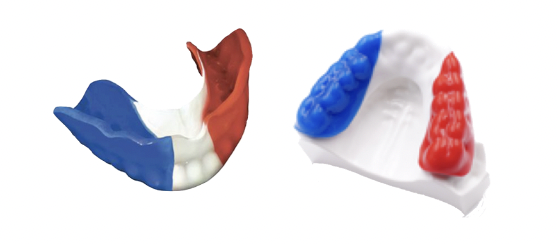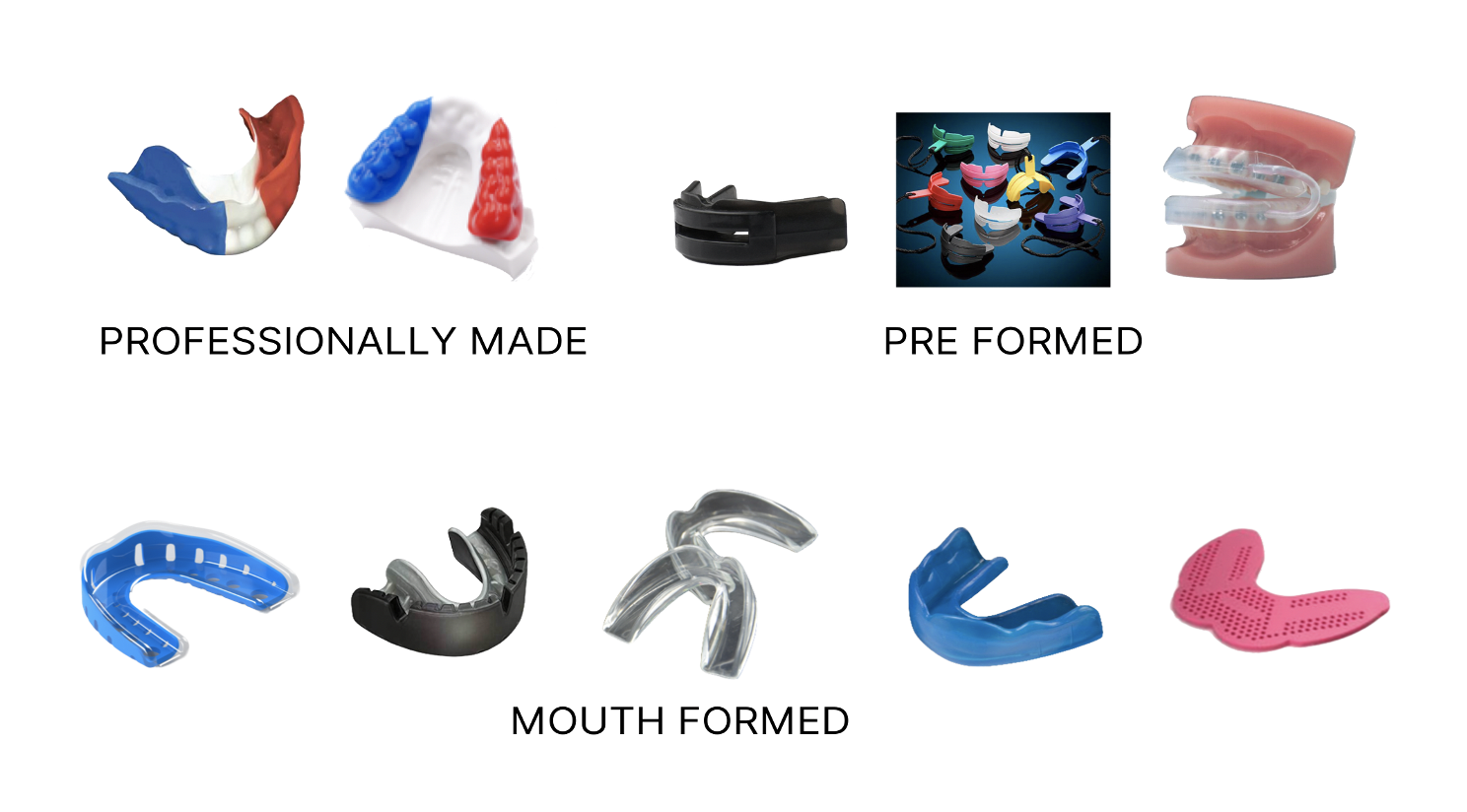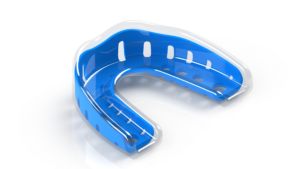As an sportsperson, protecting your teeth is crucial to your overall health and well-being. Mouthguards are essential to prevent injuries, especially during contact sports, however, not all mouthguards are created equal.
In this post, we will discuss the three different types of mouthguards and there advantages/disadvantages to help you make an informed decision on which one is right for you. We will also introduce you to the Neomorph Mouthguard that positions itself as a 4th option. A hybrid of the dental made mouthguard and the mouldable store-bought mouthguard, incorporating the custom fit, comfort and protective qualities of the dental-made mouthguard mixed with the convenience, price-point and ability to remould of the “over-the-counter” store bought mouldable mouthguard.
1. Professionally made mouthguards (dental-made)

Dental made mouthguard
The professionally made mouthguard is the most custom fitting of all mouthguards and is the preferred choice of the Australian Dental Association. This type of mouthguard offers maximum protection by holding firmly in place. The manufacturing process involves taking an impression or scan of the sports persons mouth, preparing a plaster or 3D model, heating up the mouthguard material, and then a final pressure or vacuum forming procedure that pushes or vacuums the mouthguard material over the model. The protection of this style of mouthguard can be increased by adding 2 or 3 layers of material sequentially making it thicker for heavier hitting sports.
The downsides of custom-made mouthguards are that they require an impression or scan, take time to fabricate, are more costly than their counterparts, and don’t change once formed, which is not the most practical option for patients undergoing ortho treatment as their teeth move. Each of the manufacturing steps have a direct influence on the thickness and the final fit of the mouthguard and while there are guidelines for making laboratory made mouthguards, research (including our own independently conducted testing) has consistently shown that a custom made mouthguards will often differ in protection between technicians.
2. Preformed “off the shelf” stock mouthguards

Preformed stock mouthguards
The preformed “off the shelf” mouthguard is just as it sounds, its a one-size-fits-all loose plastic overlay of the teeth, made from a thermoset or non-mouldable material. You simply buy it off-the-shelf, open the packet and put it in your mouth. The downside of these guards is that they are bulky and loose fitting, making it difficult to talk and breathe.
3. Mouldable mouth-formed mouthguards

Mouldable mouth-formed mouthguards
The mouth-formed mouthguard (sometimes referred to as a “boil & bite mouthguard”) is made from a thermoplastic material that becomes soft and pliable when heated and can be shaped around the teeth using firm finger pressure and mouth suction. The material used is primarily ethylene vinyl acetate or EVA. The same material used for laboratory-made mouthguards.
This style of mouthguard can vary somewhat with most being classified into 3 main types.
1) it will be made of a single mouldable material.
2) it will primarily be made from a mouldable material yet incorporate a non-mouldable hard insert, casing or attachment, for added protection,
3) it consists of a hard non-mouldable outer casing with a thermoplastic or mouldable layer inside that you bite into.
4) There is a now a 4th option which we discuss separately below – The Neomorph Mouthguard which incorporates a completely embedded structural layer and is entirely mouldable.
Research tells us that this style of mouldable mouthguard is the most widely worn mouthguard of all the 3 mouthguards available for a variety of reasons…… not least of all accessibility, convenience, cost and its ability to remould.
It is also more often than not the “go-to” mouthguard that clinicians will recommend for patients undergoing orthodontic treatment as it can be remoulded as their teeth move throughout treatment. Please note: It is necessary to ensure that the mouthguard manufacturer confirms that the mouthguard can be worn with braces/aligners as many cannot.
The downside of these guards is that they are typically bulky, uncomfortable, and don’t fit well. When a mouthguard is bulky and uncomfortable it can interfere with breathing, communicating and performance, and when a mouthguard doesn’t fit well, it will move or even dislodge on impact which reduces protection and can negate the very reason we wear a mouthguard in the first place. We’ve all seen kids and professional football players hanging their mouthguards out of their mouths, removing them to talk and sticking them into a sock before a shot at goal.
4. The Neomorph Mouthguard
Neomorph was designed and developed by a dental hygienist to be a hybrid of the dental made mouthguard and the store bought mouthguard – a mouldable version of the custom fitting, comfortable and protective dental-made mouthguard mixed with the convenience, price-point and ability to remould of the “over-the-counter” store bought mouthguard.
The Neomorph Mouthguard incorporates a stiff mouldable layer for added protection and differs from other mouldable mouthguards in that Neomorph is entirely mouldable…. meaning there are no uncomfortable bits sticking in to you or bulking the mouthguard out. Neomorph will conform securely around teeth to feel smooth and comfortable. Neomorph offers a thin mouthguard that is tougher than it’s thicker counterparts and absorbs impacts extremely well.
Neomorph Prodigy can also be worn by all sportspeople over 11 years of age with and without braces/aligners.
In conclusion, choosing the right mouthguard is crucial to your overall dental health and well-being. Each type of mouthguard has its advantages and disadvantages. When choosing a mouthguard you should always ensure it fits well. A simple test is to try to dislodge it from behind your top front teeth with your tongue. If you can dislodge your mouthguard easily it is not fitting securely enough and you should remould or replace it. A good mouthguard should also be comfortable and provide adequate protection for the sport you are playing.


